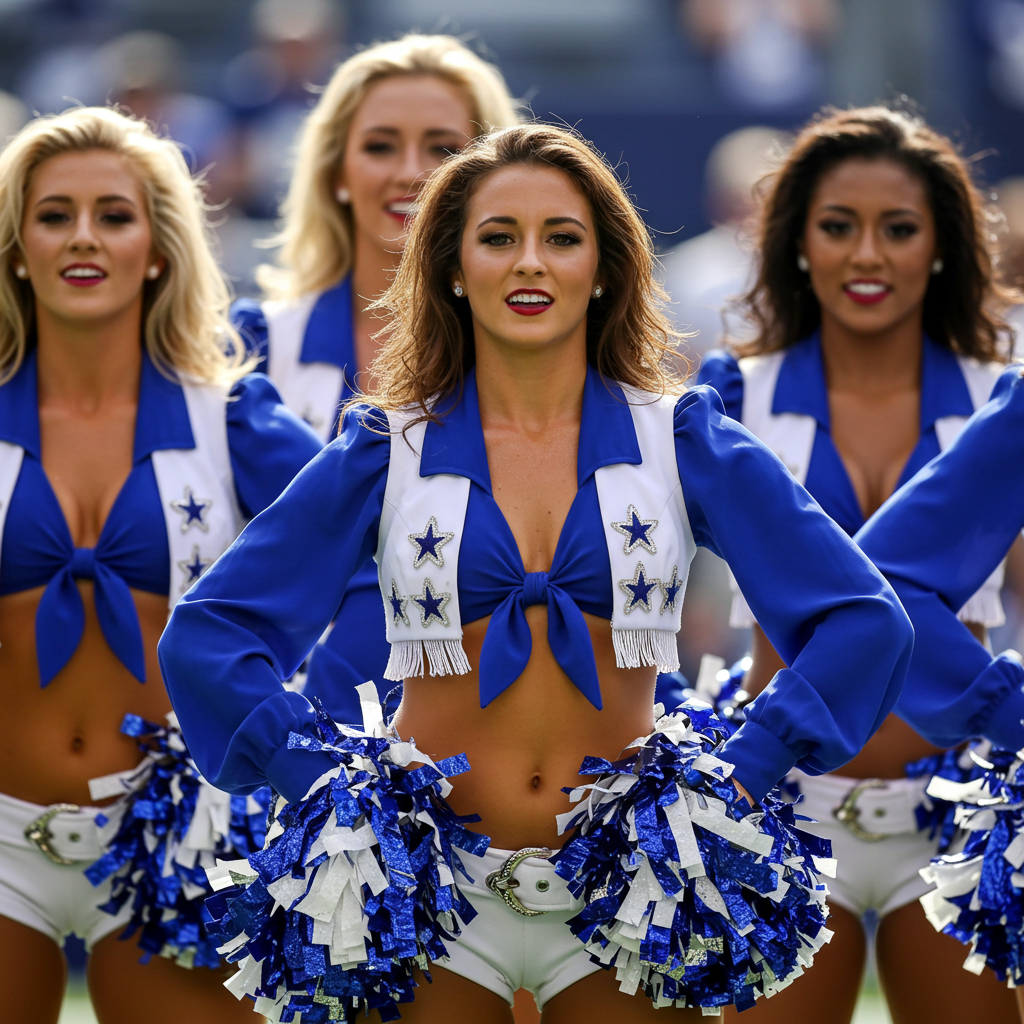Netflix’s documentary series, “America’s Sweethearts: Dallas Cowboys Cheerleaders,” returns for Season 2, offering viewers a surprisingly intense and compelling look beyond the glitz and glamour. Far from a simple “rah-rah” depiction, this season delves deeper into the pain, sorrow, and struggle these world-class performers face, particularly as they navigate challenges to their self-worth and push for fair treatment.
While Season 1 brought increased fame and adulation to the squad, it also cast a spotlight on the demanding reality and exploitation inherent in the cheerleading enterprise. Season 2 captures the direct impact of this newfound attention, showcasing the cheerleaders’ collective “quest for better pay.” As veteran Kylie aptly puts it, the world seemed to be urging them, “Girls, fight for more.”
Beyond the Sidelines: The Fight for Fair Compensation
A major, invigorating arc of the season centers on this crucial fight. Despite their iconic status and global recognition, Dallas Cowboys Cheerleaders have historically been significantly underpaid compared to other NFL personnel, including waterboys and mascots. This reality often necessitates cheerleaders holding down second or third jobs to make ends meet, balancing demanding careers like pediatric nursing or freelancing with grueling practice schedules that can end late into the night.
The series effectively illustrates the cheerleaders’ realization that while many profit from their talent and tireless work, their own compensation remains disproportionately low. This tension fuels their push for change, a movement spurred by the show’s visibility.
Following the events depicted in the series and increasing scrutiny, the Dallas Cowboys franchise announced a landmark decision in June 2025: a staggering 400% pay increase for the cheerleaders. Under the new structure, they now earn $600 per performance, a substantial jump from the previous $200 per game day, alongside compensation for practices and appearances at $25 per hour. While this raise was initially met with disappointment that it didn’t apply to the 2024-25 season featured in part of the show, it represents a monumental shift, described by former and current members as “life-changing” and “long overdue,” signaling a new level of respect for their dedication and energy.
The Physical and Mental Toll of Perfection
Beyond the fight for financial recognition, Season 2 intimately explores the immense pressure to maintain an image of effortless perfection. The demanding routines and signature moves like jump splits can lead to significant physical toll, resulting in injuries and the need for ongoing treatment and even surgery, sometimes forcing early retirement or requiring complex procedures to manage pain and maintain range of motion.
The constant scrutiny extends beyond performance to appearance. While the organization states it doesn’t have strict height/weight requirements, the focus remains on looking “well-proportioned” in dancewear, with rigorous standards for hair, makeup (no red lips/nails, covered tattoos, natural spray tans), and overall presentation. Directors like Kelli Finglass are shown meticulously scrutinizing every detail during the intense annual audition process, where even seasoned veterans must re-audition for limited spots.
The series also delves into the internal battles, often described by the cheerleaders as “fretting about being in one’s own head.” This catchall phrase encapsulates anxiety, self-recrimination, and a lack of confidence that stand in stark contrast to the required wide smiles and sexy winks. The job requires making it look easy, but the reality is far more complex.
However, the season highlights an interesting tension: the same internal space where self-doubt resides is also where critical thinking emerges. Thoughts like questioning the unfairness of others profiting from their labor or grappling with disappointment from trusted figures stem from this introspective space.
Found Family, Resilience, and Self-Worth
At its heart, “America’s Sweethearts” Season 2 is also about found families and the complex dynamics within them – offering healing but also trouble. Key figures like Jada, a five-year veteran, articulate the season’s underlying theme: pushing back against the dismissal of their profession. “Everyone’s going to say, ‘Well, they’re just cheerleaders,’” Jada notes, adding with a grin, “Well, we’re really good cheerleaders. Show us that you appreciate us.”
The series showcases the cheerleaders’ resilience, even in the face of devastating cuts during auditions. Their graceful reactions, often tearful but determined, underscore the perseverance required in highly competitive fields. By openly discussing challenges like anxiety, grief, self-esteem issues, and even past struggles with eating disorders, the cheerleaders normalize these experiences and demonstrate the strength required to seek help and maintain mental well-being amidst intense pressure.
For viewers, particularly younger ones interested in pursuing their passions, the show serves as a powerful, albeit sometimes controversial, real-world example. It illustrates that achieving dreams involves navigating determination, intense criticism, rejection, and the constant need for self-motivation, while also highlighting the importance of focusing on capability and character alongside appearance.
Directed by Emmy winner Greg Whiteley, “America’s Sweethearts: Dallas Cowboys Cheerleaders” Season 2 is a compelling watch precisely because it moves beyond surface-level performance, offering an honest, unvarnished look at the physical demands, emotional toll, financial struggles, and profound resilience of the women behind the famous uniforms.



